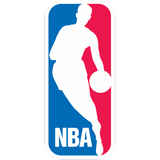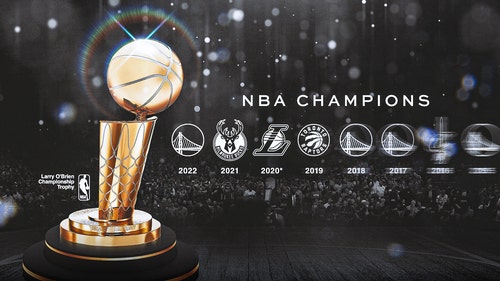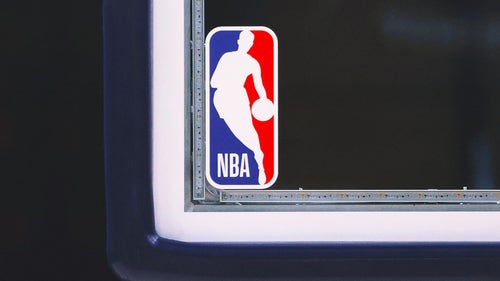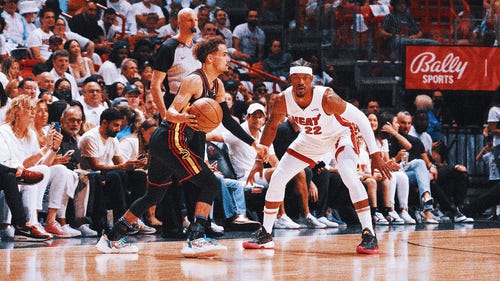
Trade Grades: Sixers Best Celtics In Win-Win Draft Deal
The Celtics have reportedly agreed to trade the No. 1 pick in this week's NBA draft—which carries the opportunity to select Washington guard Markelle Fultz—to the Sixers in exchange for the 2017 No. 3 pick and the Lakers' 2018 first-round pick (protected from two through five). If they wind up keeping the Lakers' pick, the Sixers will reportedly send the Kings' 2019 first-round pick to the Celtics.
Let's grade the trade.
Celtics: A-
Number one picks are rarely traded in the NBA, and this year's will move for one simple reason: Fultz, a gifted scoring guard and the consensus top player in the 2017 class, makes far more long-term sense in Philadelphia than in Boston.
While many observers were intrigued by the possibility of Fultz to a Celtics team that advanced to the East finals, there were clear concerns as soon as Boston won the draft lottery. SI.com deemed Fultz a “loser” that night due to his uncertain fit with the Celtics, who are in “win now” mode and already have Isaiah Thomas, a ball-dominant guard in his prime. Top picks are generally accustomed to the red-carpet treatment, unlimited touches and shots, and plenty of bandwidth to make mistakes and learn on the fly in year one. In Boston, though, Fultz would have been walking into a narrow role and heightened short-term expectations.
While Celtics president Danny Ainge has hoarded draft picks in recent years and coach Brad Stevens has turned over meaningful roles to recent draft selections like Marcus Smart, Jaylen Brown and Terry Rozier, the 19-year-old Fultz is overqualified to be “Another promising Ainge State University enrollee” and unequipped to help Boston topple Cleveland next year. Fultz is an A-list prospect, but he's not the guy to help the Celtics defend LeBron James, shore up their interior defense, or improve their team rebounding. There just isn't much overlap between Fultz's skills and Boston's immediate needs.
• Report: Celtics, Sixers agree to pick swap, Philly will draft Markelle Fultz
As such, he would have been headed for an awkward purgatorial transition of power with Thomas. The “When will this be Fultz's team?” question would have complicated Thomas's 2018 free agency and required a degree of patience and sacrifice from Fultz that would have been highly unusual for a consensus top guy. The Celtics surely could have made it work, but they didn't need to given the presence of Avery Bradley and Smart, two quality complementary guards, and the very real possibility that Ainge can add All-Star Gordon Hayward in free agency and/or trade for the likes of Jimmy Butler or Paul George.
The substantial return package helps Boston's cause whether or not Ainge is able to the extra picks into a star this summer. If Hayward stays in Utah and both Butler and George prove to be unavailable, Ainge can select a player with a better positional fit than Fultz—perhaps Josh Jackson or Jayson Tatum—while also adding a quality future first-round pick. Remember, Boston also has Brooklyn's unprotected 2018 first-rounder, which will likely give Ainge two top-10 picks to work with next summer. At this point, it would be downright shocking if Sacramento crawls out of its lottery abyss by 2019, making for a bountiful back-up plan if the Lakers' pick falls through. That's a strong haul, with a good ceiling depending on how the conveyance terms play out—to drop just two draft slots in a year when neither of the top two players on the board fit cleanly into the Celtics' scheme.
The best-case scenario, however, is that Ainge has maneuvered Boston into position to construct a trade package compelling enough to pry away Chicago's Butler or Indiana's George while also convincing Hayward that he should leave Utah to truly compete for a title in Boston. Want a team talented and versatile enough to push Cleveland in 2018 and beyond? The East won't do better than a roster that boasts Thomas, Hayward, Butler/George and Al Horford. Ditto for a potential Blake Griffin pursuit. What's the best way to convince Griffin to break up the Clippers' Big 3? Sell him on playing in a weaker conference as part of a Big 4 with Thomas, Butler/George and Horford.
Detractors will point out that Boston is giving up a shot at nine years of Fultz, a potential franchise player. If Fultz blossoms into James Harden, there will be some second-guessing. But Boston wasn't ideally positioned to guide Fultz to his best-case scenario and it didn't mortgage its future by passing on the right to add him to the fold. On the contrary, there's a strong case to be made that Ainge has increased his franchise's ability to sustain contender-level success over the next five years.

Sixers: A+
Fultz was a “loser” on lottery night because he didn't know for sure where he was going to play or what his role was going to be. This trade moves him into the “winner” category on both fronts: Philadelphia is both a rebuilding organization that can afford multiple years to develop him and a talent-deficient team that is in desperate need of his scoring and playmaking skills. This is a great home.
The Sixers' thinking throughout the Sam Hinkie-led “Process” has been pretty clear: assemble a young core of high lottery talent that can serve as the foundation of a year-in, year-out championship contender. Bottom out to win big. It took longer than expected and led to Hinkie's dismissal, but Philadelphia now possesses its “Big 3” to rival Oklahoma City's Kevin Durant, Russell Westbrook and Harden or Portland's Brandon Roy, LaMarcus Aldridge and Greg Oden. Fultz will join 2016 No. 1 pick Ben Simmons and 2014 No. 3 pick Joel Embiid to form the most-envied collection of under-25 talent in the league.
While all three of the Sixers' building blocks remain unknowns, the fit here is promising: Simmons is a pass-first point forward who can collapse a defense, Fultz is a shooter who can space alongside Simmons and should thrive as a secondary playmaker, and Embiid, when healthy, is a do-everything, two-way center who can play pick-and-roll and pick-and-pop with either Simmons or Fultz. Given those complementary skills and profiles, building around this trio should be a lot easier than assembling it.
The sneaky nice thing about this deal from Philadelphia's is that it still makes sense in less-promising alternate scenarios. Let's say Embiid, who has played just 31 total games in his first three seasons, simply can't stay healthy. In that case, Fultz and Simmons still form an intriguing and potent duo to guide a longer-than-expected turnaround. It's possible to envision Fultz functioning like a Damian Lillard-like savior for the post-Oden Blazers.
• NBA Mock Draft: The best fit for every team
Let's get even darker. Imagine Embiid washes out and Simmons, who missed his entire rookie season due to injury, succumbs to health problems and/or struggles to become a star due to his lack of shooting. In that event, Fultz gives Philadelphia one more shot at a franchise-level talent to redeem the last four years of brutal losing.
If ever there was an organization set up to “overpay” or cash in multiple assets to make a modest move up the draft board, it was Philadelphia. This entire trade package had Hinkie's fingerprints on it: The Sixers' No. 3 pick jumped up two spots on lottery night thanks to a pick swap with Sacramento, the Lakers' 2018 pick arrived courtesy of the Michael Carter-Williams fleecing, and the Kings' 2019 pick came via the Nik Stauskas robbery. Philadelphia prevailed so convincingly on the previous moves that Bryan Colangelo, Hinkie's replacement, enjoys a wide margin of error on this one.
To really drive home the “Why cash in now?” question consider these three four facts in addition to Fultz's promising future:
This trade goes down as a clean win/win/win: Boston gets to dream the Superteam dream while enriching its future, Philadelphia completes a must-see foundation after seasons of suffering, and the consensus top pick gets a place he can truly call home.







